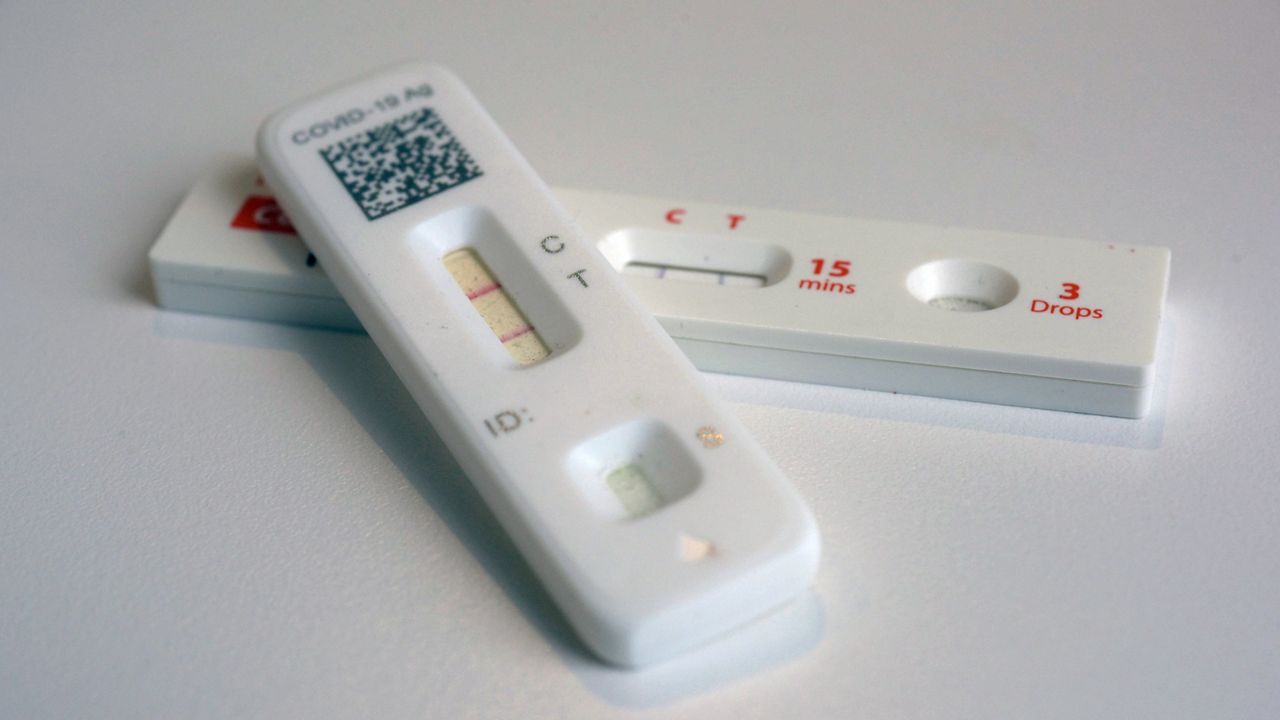Navigation
Install the app
How to install the app on iOS
Follow along with the video below to see how to install our site as a web app on your home screen.
Note: This feature may not be available in some browsers.
More options
Style variation
You are using an out of date browser. It may not display this or other websites correctly.
You should upgrade or use an alternative browser.
You should upgrade or use an alternative browser.
Covid-19 News and Discussions
- Thread starter Yommie
- Start date
Yommie
SpeedLimited
- Oct 2, 2013
- 64,193
- 37,190
- Country of Origin

- Country of Residence

- Thread starter
- #887

Number hospitalized with COVID-19 in B.C. hits highest level since March
The number of COVID-19-positive patients in B.C. hospitals surged by 67 per cent during the month of May, according to data released by the B.C. Centre for Disease Control on Thursday.
Number hospitalized with COVID-19 in B.C. hits highest level since March


Ian Holliday
CTVNewsVancouver.ca Journalist
Contact
Published June 6, 2024 10:04 p.m. EDT
Share
- Link
- X
The centre's first update since May 2 shows 162 test-positive patients in B.C. hospitals, up from just 97 in the previous release.
The latest hospitalization total is the highest the BCCDC has reported since March 14, when there were 163 people hospitalized with the disease.

RELATED STORIES
- B.C. government to pay for COVID-19 drug Paxlovid after feds drop coverage
- COVID hospitalizations drop below 100 as BCCDC switches to monthly reporting
The BCCDC reported 268 people in hospital with COVID at the start of May 2023, and 146 at the start of June 2023, a drop of roughly 46 per cent, compared to this year's increase.
Of course, COVID hospitalization totals were generally higher throughout the year last year than they have been so far in 2024.

While the BCCDC has switched to monthly reporting of COVID-19 hospitalization and testing numbers over the summer, it continues to publish wastewater surveillance data on a weekly basis.
Wastewater data has shown increasing concentrations of SARS-CoV-2 in recent weeks, but the BCCDC says in Thursday's update that "severity indicators have stabilized, following an increase in early May."
Similarly, the data released Thursday shows the number of new infections confirmed through lab-based testing during the first full week of May was 390, but it dropped to 310 in the most recent week, which ended June 1.
The percentage of tests coming back positive rose to 13.2 per cent at the start of the month, but had dropped to 11.1 per cent as of last week.
Yommie
SpeedLimited
- Oct 2, 2013
- 64,193
- 37,190
- Country of Origin

- Country of Residence

- Thread starter
- #888
4 years later, COVID remains a year-round threat. Here's why this virus isn't seasonal quite yet
Scientists bracing for another summer wave as virus continues to evolve
Lauren Pelley · CBC News · Posted: Jun 08, 2024 4:00 AM EDT | Last Updated: June 8

Transmission electron micrograph of a SARS-CoV-2 virus particle. Around the world, scientists are striving to parse out just how risky a COVID-19 infection is at this point in time. (NIAID)
Social Sharing
- X
comments
This story is part of CBC Health's Second Opinion, a weekly analysis of health and medical science news emailed to subscribers on Saturday mornings. If you haven't subscribed yet, you can do that by clicking here.
A cursory glance at Canada's wastewater trends for COVID-19 reveals a messy, unpredictable picture: Viral loads ebb and flow all throughout the year, at different times, in different cities.
While SARS-CoV-2 is now a familiar threat, the virus isn't neatly seasonal. It still circulates year-round, humming in the background. And for the fifth year in a row, some scientists are bracing for the possibility of a small summer wave.
That reality might come as a surprise to anyone who hoped this virus would quickly join the typical colder-weather cold and flu season, offering a break from COVID infections over the warmer months. But we're not quite there yet.
"When you look at the other four coronaviruses — the cause of 25 per cent of our common colds — they do have this really stark seasonality," said infectious diseases specialist Dr. Amesh Adalja, a senior scholar at the Johns Hopkins Center for Health Security. "But we don't know how long it took for them to settle into that pattern."
SARS-CoV-2, on the other hand, is still in its infancy. And its spike protein, which allows the virus to penetrate our cells and cause infections, keeps mutating at a brisk pace.
"This is a virus that was never known to infect humans before 2019, so it's still a lot of evolutionary pressure, especially with the immunity that people have developed," Adalja said.
New variants circulating
Close watchers of SARS-CoV-2's ongoing evolution are tracking several new variants, all growing more dominant in recent months.The JN.1 group remains the dominant form of the virus in Canada, while KP.2 and KP.3 — among the lineages nicknamed "FLiRT" by some scientists, after the technical names for specific genetic mutations — and LB.1 are all showing signs of growth, Public Health Agency of Canada data shows (PHAC).
All of them are offshoots of Omicron, the variant that sparked a massive wave of infections midway through the pandemic. This still-circulating family of viruses remains more contagious than earlier forms, with spike protein mutations that help bypass the protection offered by vaccines or prior infections — ensuring people can get reinfected over and over.
"We've had nothing but Omicron for about two years," said Adalja. "That lineage is still trying to find the optimal combination to infect people, and there's always going to be some evolution going on.… It's still at a high enough pace that seasonality is not quite as predictable as people would like it to be."
While the results of nationwide tests suggest low circulation of common respiratory viruses such as influenza and respiratory syncytial virus in recent weeks, SARS-CoV-2 levels rose over several weeks until late May, says the most recent PHAC respiratory virus report.
WATCH | Seniors remain at higher risk of serious COVID infections:

New COVID-19 data warns of risks to seniors not yet infected
7 months ago
Duration1:47
New Canadian data shows that more than four in 10 elderly adults may have avoided a COVID-19 infection so far. But they remain at the highest risk for hospitalization and death and researchers say keeping up-to-date with vaccinations is still the best way to reduce that risk.
The figures are murky, however, given limited COVID testing in the community and varying trends between regions. Roughly half of Canada's wastewater sites are showing no recent change in SARS-CoV-2 trends, for instance, while a quarter are showing drops and the other quarter are showing increases.
Still, ever-evolving versions of the virus could lead to increased infections in the months ahead, much like the pattern in previous Omicron years, said Dr. Zain Chagla, an infectious diseases specialist with McMaster University in Hamilton, Ont.
"We could start seeing early trickles of a wave toward the late summer," he added.
U.S. medical experts are also warning of similar trends there, albeit with smaller expected infection counts than prior summer waves.
COVID still causing hospitalizations, deaths
It's another reminder that COVID is here to stay. But with overall case counts and death rates dropping — thanks in part to higher levels of immunity across the population — it's easier to brush the virus aside.The threat has certainly lessened since the early days of the pandemic, Chagla said.
Yet this virus keeps hospitalizing vulnerable people, even through the spring and summer months. Some older and immunocompromised individuals are dying, Chagla said, and people with established immunity through vaccination or prior infection do occasionally develop severe disease.
As late as 2023, one U.S. study found COVID remained more deadly than influenza. This virus continues to kill in Canada: 23 people here died of COVID in just one week in May, according to the latest PHAC data.
Given how contagious the virus is and how fast immunity against infection fades, Adalja stressed that higher-risk groups — older adults, and those with other risk factors such as being overweight or pregnant — should continue approaching COVID differently than someone who's at an average risk.
"Those people, it's very important for them to be up-to-date on their vaccinations," he said.
Vaccination remains a challenge
Public apathy toward the pathogen could complicate that.Vaccine uptake has dropped off over the years, with fewer than two in 10 Canadians getting the most recent updated shots. And although age has always been a risk factor for severe COVID, only 53 per cent of adults aged 80 and up had their latest round, according to PHAC.
"That's the highest vulnerable group," said Chagla, "and you can't even convince more than half of them to be vaccinated."
For those who opt for additional shot, there's good news: COVID vaccines continue to be updated to better match circulating strains. This week, U.S. officials approved fall shots based on the JN.1 lineage, and Canada tends to be in lockstep with those decisions south of the border.
WATCH | How wastewater monitoring helps track COVID:

How does wastewater help with surveillance of COVID-19?
3 years ago
Duration4:19
Ottawa has been testing its wastewater to get a better understanding of how much of the coronavirus is in the city's sewage. The project's co-lead investigator explains how it helps with surveilling COVID-19.
But physician-epidemiologist Dr. Nitin Mohan, an assistant professor at Western University in London, Ont., said the lag between the emergence of new variants and the approval of matched vaccines remains a constant challenge. That means the world is always a step behind the evolution of SARS-CoV-2, allowing it to continually circulate and reinfect people more often than many older viruses.
"Hopefully we get to the point one day where we have vaccinations that prevent transmission," Mohan said. "I think that will be sort of the real game changer."
Until that day comes, he said it's anyone's guess how long it will take for SARS-CoV-2 to become more seasonal and predictable.
"I probably have a better guess of when the Leafs will win the Stanley Cup at this point."
Yommie
SpeedLimited
- Oct 2, 2013
- 64,193
- 37,190
- Country of Origin

- Country of Residence

- Thread starter
- #889
Whoa! This is pretty cool. @Sharma Ji

 medicalxpress.com
medicalxpress.com

Virus that causes COVID-19 can remain in sperm for 110 days after infection
Researchers at the University of São Paulo (USP) in Brazil have shown for the first time that SARS-CoV-2, the virus that causes COVID-19, can remain in the sperm of patients for up to 90 days after hospital discharge and up to 110 days after the initial infection, reducing semen quality. The...
Yommie
SpeedLimited
- Oct 2, 2013
- 64,193
- 37,190
- Country of Origin

- Country of Residence

- Thread starter
- #890

Opinion | Why the Pandemic Probably Started in a Lab, in 5 Key Points
The world must not continue to bear the intolerable risks of research with the potential to cause pandemics.
Yommie
SpeedLimited
- Oct 2, 2013
- 64,193
- 37,190
- Country of Origin

- Country of Residence

- Thread starter
- #891

Covid Situation Report: Jun 6, 2024
Update on Covid providing information on prevalence and hospital admissions for England and its regions. This post is best viewed using the browser or Substack app.
Yommie
SpeedLimited
- Oct 2, 2013
- 64,193
- 37,190
- Country of Origin

- Country of Residence

- Thread starter
- #892
COVID guidelines caused millions to suffer. Now Fauci admits 'there was no science behind it.'
Many of us could have told Dr. Anthony Fauci his COVID-19 guidelines were doing harm.
Yommie
SpeedLimited
- Oct 2, 2013
- 64,193
- 37,190
- Country of Origin

- Country of Residence

- Thread starter
- #893

Moderna combi flu and Covid jab gives better protection, study finds
Clinical trials show two-in-one jab may bring about higher immune responses than separate inoculations
Yommie
SpeedLimited
- Oct 2, 2013
- 64,193
- 37,190
- Country of Origin

- Country of Residence

- Thread starter
- #894

There's another COVID variant you should know about: KP.3 now makes up 25% of COVID cases
The Centers for Disease Control and Prevention data shows that the KP.3 variant is now the dominant variant making up 25% of COVID cases.
Yommie
SpeedLimited
- Oct 2, 2013
- 64,193
- 37,190
- Country of Origin

- Country of Residence

- Thread starter
- #895
Australian COVID-19 infections rise to highest level in more than a year
Amid an influx of patients and a surge in staff illness, authorities in some parts of the country have been forced to cancel elective surgeries and temporarily reinstitute masking in health facilities.
www.wsws.org
Yommie
SpeedLimited
- Oct 2, 2013
- 64,193
- 37,190
- Country of Origin

- Country of Residence

- Thread starter
- #896

Mounting research shows that COVID-19 leaves its mark on the brain, including with significant drops in IQ scores
Two new high-profile studies add to the increasingly worrisome picture of how even mild cases of COVID-19 can have detrimental effects on brain health.
 theconversation.com
theconversation.com
Yommie
SpeedLimited
- Oct 2, 2013
- 64,193
- 37,190
- Country of Origin

- Country of Residence

- Thread starter
- #897
Weekly case numbers from around Australia: 13,963 new cases ( 22%)
22%)
Australia: Case Update- NSW 5,541 new cases (
 9%)
9%) - VIC 2,511 new cases (
 101%)
101%) - QLD 2,205 new cases (
 9%)
9%) - WA 726 new cases (
 11%)
11%) - SA 2,453 new cases (
 3%)
3%) - TAS 126 new cases (
 9%)
9%) - ACT 268 new cases (
 69%)
69%) - NT 133 new cases (
 1%)
1%)
Levels are now well above our summer wave, and will be nearing those seen in the winter 2023 wave (~15% below today). These waves are still well below the levels seen in 2022.

These numbers suggest a national estimate of 280K to 420K new cases this week or 1.1 to 1.6% of the population (1 in 74 people).
Flu tracker tracks cold and flu symptoms (fever plus cough) and is another useful tool for tracking the level of respiratory viruses in the community. This increased slightly to 2.3% (
- NSW: 2.6% (
 0.1%)
0.1%) - VIC: 2.5% (
 0.4%)
0.4%) - QLD: 1.9% (
 1.0%)
1.0%) - SA: 1.6%
- WA: 2.1% (
 0.3%)
0.3%) - TAS: 1.9% (
 0.3%)
0.3%) - ACT: 2.5% (
 0.6%)
0.6%) - NT: 2.7% (
 1.9%)
1.9%)
- Influenza cases are rising
- RSV remain at moderate levels.
- Adenovirus, Parainfluenza and Rhinovirus are also rising in NSW.
- Pertussis (whooping cough) continues to be an issue with a steady increase since the start of the year with currently nearly 250 notifications per 100,000 in 5-14 year olds from NSW.
- Pneumonia cases are high, with signs that Mycoplasma pneumoniae is the likely driver.

NSW Pneumonia ED admissions are higher than the combined tally of COVID, RSV and influenza ED administrations
KP.3 continues to be the primary driver of the current wave, making up a third of the cases with the combined KP sub-lineage accounting for approximately half of the cases.

NSW sub-lineages to 25 May 2024
Notes:
- Case data is from NNDSS Dashboard that is automated from CovidLive.
- These case numbers are only an indicator for the current trends as most cases are unreported.
- Only SA still collect or report RAT results.
- Estimate is based on changes seen over 2022 and 2023, (especially hospitalisations), that roughly suggested only 1 in 25 (± 5) cases are reported after testing requirements were removed.
Yommie
SpeedLimited
- Oct 2, 2013
- 64,193
- 37,190
- Country of Origin

- Country of Residence

- Thread starter
- #898
COVID-19: Current cases – Health New Zealand | Te Whatu Ora
Read the latest information about confirmed and probable cases of COVID-19 in New Zealand.
COVID-19: Current cases
Read the latest information about confirmed and probable cases of COVID-19 in New Zealand.This data is updated weekly. All data on this page relates to cases recorded prior to 11:59 pm 9 June 2024.
Whatu Tāniko pattern
On this page
- COVID-19 cases summary
- Current situation
- Deaths with COVID-19
- Case details
- Definitions
- Cases reported each day
- COVID-19 by location
- Total cases by location
This data is updated weekly. All data on this page relates to cases recorded prior to 11:59 pm 9 June 2024.
COVID-19 cases summary
| New case average* | RATs uploaded average* |
| 676 ↓ | 934 ↓ |
| Cases in hospital as at midnight Sunday | Cases in ICU as at midnight Sunday |
| 354 | 0 |
| Deaths attributed to COVID* | Total deaths attributed COVID |
| 3 ↓ | 4,083 |
Current situation
Summary| In the last week | New cases reported | 5230* |
|---|---|---|
| Reinfections | 3429 | |
| Reinfections (< 90 days) | 21 | |
| Total since first New Zealand case | Cases reported | 2660367 |
| Reinfections | 379782 | |
| Reinfections (< 90 days) | 26559 |
Case outcomes since first New Zealand case
| COVID-19 cases | Change in the last week | Total |
|---|---|---|
| Recovered | 6401 | 2651554 |
| Deceased* | 20 | 4083* |
Deaths with COVID-19
| Cause of death | Died within 28 days of positive test | Died more than 28 days after positive test | Total | Change in the last week |
|---|---|---|---|---|
| COVID as underlying | 2420 | 140 | 2560 | 13 |
| COVID as contributory | 1408 | 115 | 1523 | 7 |
| COVID-attributed total | 3828 | 255 | 4083 | 20 |
| Not COVID | 1890 | 0* | 1890 | 23 |
| Not available | 265 | 0 | 265 | -8 |
| Total | 5983 | 255 | 6238 | 35* |
Of the 35 people whose deaths we are reporting today: one was from Northland, 12 were from Auckland region, six were from Waikato, one was from Tairawhiti, one was from Hawke's Bay, five were from MidCentral, one was from Wellington region, one was from Nelson Marlborough, three were from Canterbury, two were from South Canterbury, two were from Southern.
Two were in their 40s, three were in their 50s, five were in their 60s, four were in their 70s, 14 were in their 80s and seven were aged over 90. Of these people, 13 were women and 22 were men.
Case details
Number of active cases| Change in the last week | Total since first NZ case | |
|---|---|---|
| Confirmed | 4870 | 2614723 |
| Probable | 360 | 45644 |
| Total | 5230* | 2660367 |
Definitions
| Active case - confirmed | Confirmed cases are people who have received a positive PCR test OR someone who has received a positive result on a Rapid Antigen Test. For more details, see the COVID-19 case definition. |
|---|---|
| Active case - probable | A probable case is when someone is diagnosed based on their exposure to other people with COVID-19 and on their symptoms. |
| Reinfections | Reinfections are cases in an individual who reported a case 29 or more days previously. |
| Recovered | Recovered cases are people who had the virus, where at least 7 days have passed since their symptoms started and they have not had symptoms for 72 hours, and they have been cleared by the health professional responsible for their monitoring. |
| Deceased | Includes all deaths where COVID-19 is determined to have been the underlying cause of death or a contributory cause of death. |
Cases reported each day
Daily confirmed and probable cases

This graph shows the count of all cases of COVID-19 every day (all cases – confirmed and probable) since the first New Zealand case in late February 2020. The graph shows the rapid increase of daily cases from mid-February 2022 to early March 2022, driven by the Omicron variant.
From mid-March to mid-April 2022, cases rapidly declined, followed by a period of slower decline until early July. This was followed by a rapid increase in cases, peaking in August before a steady decline in new daily cases. Reported new daily cases hit their lowest since February 2022 in September 2022.
New COVID-19 cases reported each day
This graph shows the count of all cases of COVID-19 every day (all cases – confirmed and probable) since the first New Zealand case in late February 2020. The graph shows the rapid increase of daily cases from mid-February 2022 to early March 2022, driven by the Omicron variant.
From mid-March to mid-April 2022, cases rapidly declined, followed by a period of slower decline until early July. This was followed by a rapid increase in cases, peaking in August before a steady decline in new daily cases. Reported new daily cases hit their lowest since February 2022 in September 2022.
COVID-19 by location
Total cases by location

This bar graph shows the total cases and their status by health district and those with recent travel history.
The ‘At the border’ data group includes cases detected in managed isolation or quarantine facilities from the period when these were operating, as well as cases with recent travel history from after that time. They are not included in the district totals. Before 17 June, people in managed isolation or quarantine facilities were included in the total of the relevant district.
Total COVID-19 cases by location graph
This bar graph shows the total cases and their status by health district and those with recent travel history.
The ‘At the border’ data group includes cases detected in managed isolation or quarantine facilities from the period when these were operating, as well as cases with recent travel history from after that time. They are not included in the district totals. Before 17 June, people in managed isolation or quarantine facilities were included in the total of the relevant district.
Total cases by location
| Location | Active | Recovered | Deceased | Total | New cases in the last week |
|---|---|---|---|---|---|
| Auckland | 502 | 249304 | 275 | 250081 | 562 |
| Bay of Plenty | 141 | 116620 | 194 | 116955 | 149 |
| Canterbury | 763 | 351582 | 558 | 352903 | 850 |
| Capital and Coast | 528 | 188841 | 188 | 189557 | 587 |
| Counties Manukau | 367 | 296065 | 326 | 296758 | 394 |
| Hawke's Bay | 134 | 87131 | 173 | 87438 | 145 |
| Hutt Valley | 274 | 92355 | 100 | 92729 | 303 |
| Lakes | 71 | 51880 | 112 | 52063 | 76 |
| Mid Central | 178 | 98358 | 212 | 98748 | 195 |
| Nelson Marlborough | 186 | 81104 | 165 | 81455 | 204 |
| Northland | 93 | 82371 | 153 | 82617 | 105 |
| South Canterbury | 77 | 35131 | 46 | 35254 | 83 |
| Southern | 333 | 194599 | 391 | 195323 | 359 |
| Tairāwhiti | 53 | 26994 | 46 | 27093 | 60 |
| Taranaki | 86 | 66618 | 131 | 66835 | 97 |
| Unknown | 0 | 2301 | 9 | 2310 | NA |
| Waikato | 325 | 211572 | 415 | 212312 | 385 |
| Wairarapa | 40 | 26107 | 67 | 26214 | 46 |
| Waitematā | 489 | 314130 | 415 | 315034 | 530 |
| West Coast | 11 | 16029 | 22 | 16062 | 14 |
| Whanganui | 79 | 35170 | 79 | 35328 | 86 |
| At the Border* | 0 | 27292 | 6 | 27298 | NA |
| Total | 4730 | 2651554 | 4083 | 2660367 | 5230 |
You can also view a detailed breakdown of daily case numbers for each district since the beginning of the pandemic by clicking the ‘download’ button on the right hand side of this page: New Zealand COVID-19 data.
Note: we cannot give detailed information about cases in your district, city or town, as we must protect the privacy of the people concerned.
Yommie
SpeedLimited
- Oct 2, 2013
- 64,193
- 37,190
- Country of Origin

- Country of Residence

- Thread starter
- #899

RATs, vaccines and treatments, the budget for Covid: What you need to know
Explainer - Here's what we know about the government's Covid plans for the next four years.
Yommie
SpeedLimited
- Oct 2, 2013
- 64,193
- 37,190
- Country of Origin

- Country of Residence

- Thread starter
- #900
Doctors urge calm as Canberra records spike in COVID-19 cases, hospitals introduce tighter restrictions
Canberra hospitals have reintroduced mask mandates as COVID-19 and other respiratory illnesses increase.
Users who are viewing this thread
Total: 1 (members: 0, guests: 1)
Pakistan Defence Latest
-
J-31 to be inducted soon| Pilot training reportedly in progress (5 Viewers)
- Latest: NGAD IS THE BEST
-
-
1 cop martyred, 3 injured in blast while escorting foreign diplomats in Swat (2 Viewers)
- Latest: hussain0216
-
Country Watch Latest
-
-
-
-
Not just engines, Tejas Mk-1A delivery could be hit over key Danish part, now on export blacklist (3 Viewers)
- Latest: Tejas Spokesman
-
Latest Posts
-
-
J-31 to be inducted soon| Pilot training reportedly in progress (5 Viewers)
- Latest: NGAD IS THE BEST
-
Saudi Arabia prioritises energy relations with China over deals with the US (8 Viewers)
- Latest: Muji.Iqbal
-
-

